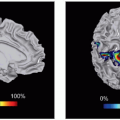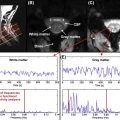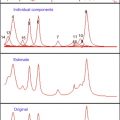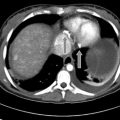The human spine is a highly specialized structure that protects the neuraxis and supports the body during movement, but its complex structure is a challenge for imaging. Radiographs can provide fine bony detail, but lack soft tissue definition and can be complicated by overlying structures. MR imaging allow(s) excellent soft tissue contrast, but some bony abnormalities can be difficult to discern. This makes the 2 modalities highly complementary. In this article, the authors discuss the correlation between radiographic and MR imaging appearances focusing first on disease affecting the vertebral body itself, its surrounding structures, and finally global spinal alignment.
Key points
- •
Plain radiographs and MR images both have distinct strengths and weaknesses in the imaging of the spine.
- •
Disease processes predominantly affecting bone marrow or soft tissue can be difficult to detect on radiographs unless they affect the cortical outline, at which point changes on MR imaging are often extensive.
- •
Certain findings obvious on radiographs such as bony fusion and syndesmophyte formation can be difficult to discern on MR imaging.
- •
Radiographs have an advantage over MR imaging in assessing spinal alignment because they can be acquired erect and dynamic flexion examinations can also help in curve assessment. However, MR imaging is superior in assessing the neuraxis in these patients.
Introduction
The human spine is a highly specialized structure normally consisting of 33 bony elements and supporting soft tissues that support the body and protect the spinal cord and nerve roots while allowing remarkable flexibility and force distribution. The 24 mobile vertebrae with the exception of the atlas and axis consist of a roughly cylindrical body bounded at the cranial and caudal aspects by the “end plates,” thin osseous and hyaline cartilage structures loosely connected to the underlying vertebra but closely associated with the fibrocartilaginous intervertebral discs, which act to absorb and distribute axial load. Connected to the body by 2 pedicles, the posterior elements of the vertebrae serve as surfaces for articulation and ligamentous and muscular attachments.
The earliest documented imaging of the vertebral column dates to 1897, when a radiograph was used to locate a bullet lodged in the spine of a patient with Brown-Sequard syndrome by Harvey Cushing. Imaging of the spine initially aimed to delineate the appearances and alignment of the bony structures of the spine, especially in blunt and penetrating trauma. However, the complex morphology of the vertebral bodies made accurate delineation of subtle abnormalities and injuries difficult to demonstrate on planar radiographs and soft tissue abnormalities were often completely occult.
It was not until MR imaging was realized in 1973 that the spinal soft tissues and neuraxis were directly visualized for the first time. Diagnostic images of the spine began to be documented in the early 1980s when the first clinical superconducting magnets were installed. Since this time, MR imaging has completely revolutionized how the spine is investigated.
Today, imaging investigation of the spine consists of a multimodality approach of X-ray–based images and MR imaging. Plain radiographs afford a far greater resolution to detect structural change and can be acquired with the spine loaded to accurately delineate alignment, but MR imaging allows for the detection of subtle disturbances in soft tissues and bone marrow early on in disease and can demonstrate further lesions that may be occult on radiographs.
Radiography and MR imaging are therefore highly complementary with distinct strengths and weaknesses. In this review, we focus on nontraumatic conditions of the spine in which both plain radiographs and MR images play an important role and the correlation between modalities.
Vertebral body
The vertebral body is the cylindrical anterior part of the C3 to L5 vertebrae and consists of a thin layer of compact bone enclosing cancellous bone occupied by highly hematopoietic red marrow. The anterior and posterior cortices are associated with the anterior and posterior longitudinal ligaments. The anterior longitudinal ligament is strongly associated with the anterior vertebral body periosteum, whereas the posterior longitudinal ligament is attached to the disc annulus and the superior and inferior vertebral corners corresponding to the location of the fused apophyseal growth centers.
Radiographically, the vertebral body demonstrates slight concavity of the superior, inferior, and anterior aspects caused by the fusion of the ring apophyses to the centrum at skeletal maturity. There is normally a small cortical gap posteriorly corresponding with the foramen for the basivertebral vein(s). The cortical outline on radiographs is diagnostically most valuable and subtle cortical defects on radiographs can correspond to extensive MR imaging abnormalities within the cancellous bone occult radiographically. This finding is especially the case with sacral lesions.
On MR imaging, the vertebral body shows a low signal rim corresponding with compact bone and a variable signal marrow space depending on sequence and on the hematopoietic state of the marrow. However, the signal of the marrow on T1-weighted spin echo imaging is usually of higher signal than the corresponding disc or adjacent muscle. A heterogenous marrow signal intensity is common in normal patients and can reflect hematopoietic foci in background yellow marrow, which sometimes can make interpretation difficult.
Expanded or Eroded/Destroyed
An expanded or focally deficient contour implies a bone lesion or altered marrow process. Infection, which can also cause cortical erosion, is discussed in greater depth elsewhere in this article.
Vertebral body expansion can be due to benign processes or alternatively primary or metastatic malignancy. Plain radiographs can be helpful along with clinical and demographic information in narrowing the differential diagnosis. MR images may not add to the diagnosis of the primary lesion, but may reveal other radiologically occult lesions and delineate any soft tissue component or neuraxis impingement.
On plain radiographs, several features should be noted. The periphery of benign lesions is often sclerotic and narrow, whereas ill-defined destructive lesions are more likely to be aggressive. Some tumors such as giant cell tumors, hemangiomas, and myeloma favor the body over the posterior neural arch. The presence of multiple levels of disease can also be helpful in narrowing the differential, with the most likely causes of multifocal or diffuse abnormality being metastases or hematological malignancy such as myeloma, whereas contiguous involvement generally tends to favor infection. In certain cases, plain radiography can be pathognomonic, such as in the picture frame appearance of Paget’s disease ( Fig. 1 ).

Compressed
Loss of height of a vertebral body on a radiograph implies a vertebral compression fracture, although normal variants such as cupid bow vertebrae and processes mimicking fractures should be excluded. For example, Scheuermann’s disease, an osteochondritis characterized by anterior wedging of multiple adjacent vertebrae, end plate irregularity with Schmorl’s nodes and hyperkyphosis is relatively common.
Once demonstrated, determining fracture acuity and distinguishing benign osteoporotic collapse from pathologic fracture caused by malignancy are the most important clinical questions. On the radiograph, acuity is very difficult to discern and destructive bone lesions are often occult. Signs of malignancy such as pedicular destruction, an associated soft tissue mass, or a convex posterior bulge are helpful if present, although this finding is present in a minority of cases. Other characteristics may raise suspicion for malignant disease, such as multiple lytic lesions in the case of multiple myeloma or disseminated metastases (see Fig. 9 ).
By the time cortical destruction is visible on a radiograph or trabecular destruction is widespread enough to significantly affect bone density, disease is often extensive ( Fig. 2 ). For this reason, the correlation of findings with MR imaging is critical to determine fracture etiology and neuraxis involvement.

MR imaging can evaluate bone marrow signal and in turn structural composition, being able to distinguish normal from pathologic patterns. In the case of a pathologic fracture owing to tumor, T1-weighted hypointensity represents malignant substitution of normal marrow tissue and this abnormality may be seen asymmetrically involving the posterior elements. Although the T1 signal is reduced in an acute osteoporotic collapse, the foci of normal marrow fat can usually be observed using conventional sequences and these structures are seen to increase in extent on follow-up studies ( Fig. 3 ). High signal in the posterior elements on fluid sensitive sequences is often seen as a stress phenomenon, but this is usually symmetric in distribution.

Scalloped
The radiographic finding of vertebral body scalloping is most common posteriorly, but can less frequently affect anterior and even lateral aspects. The appearance implies a chronic pressure effect from a neighboring structure or tumor—in the posterior aspect, this finding is synonymous with canal pathology. The finding can be diffuse over many segments or localized, and there may be features on the radiograph such as congenital block vertebrae to hint at the cause. MR imaging is invaluable in assessment, because it will often reveal the etiology and can assess the effect on the neuraxis.
The most common cause of posterior scalloping is dural ectasia in which a deficient dura is thought to allow erosion of the vertebral body contour despite normal cerebrospinal fluid pressures. However, longstanding high cerebrospinal fluid pressures in cases of chronic hydrocephalus and achondroplasia will also cause diffuse scalloping ( Fig. 4 ). Tumors of the spinal canal only rarely cause scalloping and the greatest effect is thought to occur with slow growing lesions such as ependymomas and lipomas that occur in the actively growing spine.

Anterior and lateral scalloping are rarer and usually owing to pressure from pathologic local structures. Pulsations from an enlarged or pathologic aorta can erode posteriorly into the adjacent vertebral bodies ( Fig. 5 ). Neurofibromata of the exiting nerve roots can cause lateral and anterior scalloping as well as exit foraminal enlargement on lateral radiographs. Down’s syndrome is also a cause of anterior scalloping, although the cause is unknown.

Squaring and Shiny Corners
Loss of the normal anterior concavity of the vertebral body is most often observed in established axial spondyloarthropathy and most commonly in ankylosing spondylitis. This loss only occurs after radiographic evidence of anterior longitudinal ligament enthesopathy becomes evident, and is due to an inflammatory osteitis and repair cycle centered on the enthesis, which “fills out” the anterior concavity. Although this finding may be subtle, other hallmarks such as syndesmophytes, Anderson lesions, and sacroiliac joint disease may also be present.
The first radiographically apparent abnormality is bony erosion at the entheses, but this process is difficult to detect because it is often transient and the posterior body corner entheses are often obscured by other structures. However, on MR imaging, this early enthesopathic inflammation is easily visible as high signal “shiny corners” on fluid-sensitive sequences. Radiographic shiny corners correspond with healed entheseal lesions, which are seen as T1 low-signal quiescent areas on MR imaging. Other healed vertebral corner lesions can also demonstrate high T1 marrow signal reflecting fat content. Although early inflammatory changes are easily appreciable on MR imaging, subtle syndesmophytes are often difficult to appreciate and fusion between vertebral levels and of sacroiliac joints obvious on radiographs can sometimes be missed ( Fig. 6 ).

Congenital Contour Abnormalities
The vertebral body develops from chondrification centers that arise within the sclerotome around the notochord. By the ninth gestational week, the notochord involutes and the ventral and dorsal ossification centers for the body arise within the cartilage; failure at any stage of this development results in a congenital contour abnormality such as a hemivertebra (chondrification center failure), wedge vertebra (ossification center failure), or butterfly vertebra (failure of notochord involution).
On plain radiographs, vertebral body abnormalities are readily identified, usually situated at the apex of a scoliosis or kyphosis. MR imaging is used routinely now, especially if correction is being considered, because it can help to identify any levels of neuraxis compromise or associated cord abnormalities (eg, diastomatomyelia, tethered cord, syrinx) to plan surgery ( Fig. 7 ). Further discussion of the imaging and assessment of adult spinal deformity (ASD) is discussed in the section on vertebral malalignment.


Stay updated, free articles. Join our Telegram channel

Full access? Get Clinical Tree








